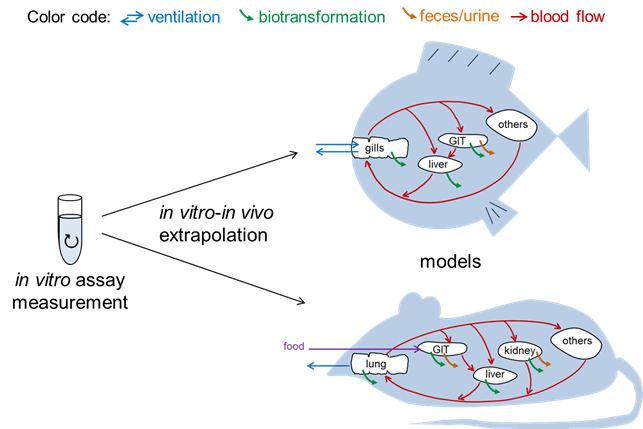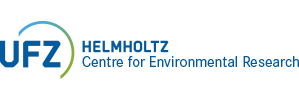Bioaccumulation
Bioaccumulation assessment is one criterion in the environmental risk assessment of chemicals. Usually, the bioaccumulation potential of a chemical is determined via animal testing. One promising approach that requires less animal use is the prediction of a chemical’s bioaccumulation potential us-ing in vitro biotransformation data, because strong biotransformation prevents bioaccumulation in organisms. However, significant discrepancies are often reported when prediction results have been compared with in vivo bioaccumulation tests.
A detailed revision of the extrapolation equations showed that the commonly used extrapolation formalism leads to equations with inconsistent units indicating shortcomings in the mathematical procedure. However, even the recently presented corrected extrapolation equations (Krause, Goss 2018) could not fully resolve the discrepancies between extrapolation results and in vivo observa-tion. In our project, we evaluated what other reasons might explain these discrepancies and how the bioaccumulation predictions can be further improved. Currently, many processes that affect in vivo biotransformation kinetics are still not considered in the prediction models: the potentially limited delivery of the chemicals in vivo due to slow permeation of the chemical into the metabolically ac-tive cells or due to slow desorption from binding proteins in blood, the potentially decreased uptake of the chemical due to first-pass effects or the potentially higher biotransformation capacity due to the tubular architecture of blood capillaries in the liver or due to extrahepatic metabolism.
 Figure 1: Quantitative in vitro - in vivo extrapolation and the application of PBTK models in the context of bioaccumulation assessment
Figure 1: Quantitative in vitro - in vivo extrapolation and the application of PBTK models in the context of bioaccumulation assessment
Classically, bioaccumulation evaluations mainly focused on aquatic species. However, due to the fact that aquatic species cannot represent bioaccumulation behavior in air-breathing species, methods for bioaccumulation assessment in terrestrial organisms are more and more in demand. The overall objective thus was the development of a comprehensive, easy-to-handle model for fish and rat that extrapolates in vitro biotransformation data and uses the extrapolation results for bioaccumulation prediction (Krause, Goss 2021).
Related own publications:
Krause, Sophia, and Kai Uwe Goss. 2018. “In Vitro- in Vivo Extrapolation of Hepatic Metabolism for Different Scenarios - A Toolbox.” Chemical Research in Toxicology 31 (11): 1195–1202. https://doi.org/10.1021/acs.chemrestox.8b00187
Krause, Sophia, and Kai Uwe Goss. 2020. “Comparison of a Simple and a Complex Model for BCF Prediction Using in Vitro Biotransformation Data.” Chemosphere 256. https://doi.org/10.1016/j.chemosphere.2020.127048
Krause, Sophia, and Kai Uwe Goss. 2021a. “Could Chemical Exposure and Bioconcentration in Fish Be Affected by Slow Binding Kinetics in Blood?” Environmental Science: Processes and Impacts 23 (5): 714–22. https://doi.org/10.1039/d1em00056j
Krause, Sophia, and Kai Uwe Goss. 2021b. “Prediction of Unbound Fractions for in Vitro-in Vivo Extrapolation of Biotransformation Data.” Chemical Research in Toxicology 34 (1): 7–11. https://doi.org/10.1021/acs.chemrestox.0c00349
Krause, Sophia, and Kai Uwe Goss. 2021c. “Relevance of Desorption Kinetics and Permeability for in Vitro-Based Predictions of Hepatic Clearance in Fish.” Aquatic Toxicology 235 (March). https://doi.org/10.1016/j.aquatox.2021.105825
Schultz, Matthew, Sophia Krause, and Markus Brinkmann. 2022. “Validation of Methods for in Vitro- in Vivo Extrapolation Using Hepatic Clearance Measurements in Isolated Perfused Fish Livers.” Environmental Science and Technology 56 (17): 12416–23.
https://doi.org/10.1021/acs.est.2c02656
